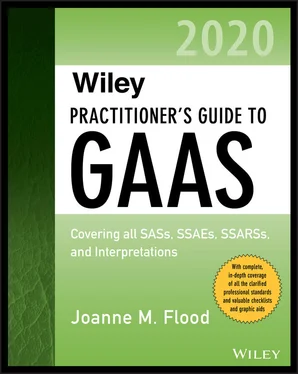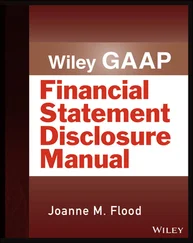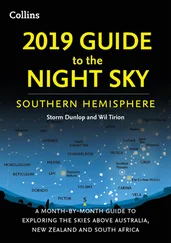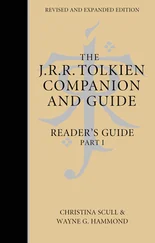For example, when your test work reveals deficiencies in either the design or the operating effectiveness of a control procedure, you will need to exercise your judgment in order to reach a conclusion about control effectiveness.
Ultimately, you should consider that you are making a conclusion about the effectiveness of internal control as a whole . When you evaluate activity-level controls, you should consider the effectiveness of the entire information-processing stream, not individual control procedures in isolation.
Another approach is a source list of procedures or evidential matter to be used as a resource in developing audit programs. Exhibit 12.3indicates what this approach might look like for some common financial statement components. Usually such source lists present either evidential matter or procedures but, to avoid repetition, not both. For example, if the evidential matter is minutes of board meetings, the procedure is to read the minutes. Or if the procedure is to inspect a broker’s advice, the evidential matter is the broker’s advice.
Another approach is to use standardized audit programs developed for common components of financial statements. This approach is not illustrated here. Many auditors prefer source lists to packaged programs because of a concern that standardized programs promote routine application and do not encourage exercise of judgment.
| Elements of financial statements |
Existence or occurrence |
Completeness |
Rights and obligations |
Valuation or allocation |
Presentation and disclosure |
| Cash |
Bank confirmations |
Bank reconciliations |
Bank confirmations |
Foreign currency exchange rates from newspapers, and so on |
Confirmation of restrictions on bank balances |
|
Cash counts |
Interbank transfer schedules |
|
|
Contractual agreements relating to escrow funds, compensating balances, sinking funds, and so on |
|
Certificates of deposit and savings account books |
Subsequent cutoff bank statements Review of controls over cash receipts and disbursements |
|
|
|
|
|
|
|
|
| Marketable securities |
Security counts |
Analyses of general ledger account activity |
Certificate of ownership |
Broker’s advices and documents supporting purchases of securities |
Representation and other information regarding management’s intention to retain securities |
|
Security confirmations |
Confirmations of security positions with brokers and dealers |
Security confirmations |
Market value quotations |
Minutes of board or committee meetings |
|
Custodian’s reports |
Custodian’s reports |
|
Appraised values of infrequently traded securities |
Contractual terms of debt securities and preferred stocks |
|
|
Review of subsequent transactions |
|
Foreign currency exchange rates from newspapers, and so on |
Confirmation of securities pledged under loan agreements, and so on |
|
|
Review of controls over security of investments and transactions |
|
|
|
| Receivables |
Confirmation of account balances |
Tests of year-end sales and shipping cutoff procedures |
Confirmation of account balances |
Aging of open balances |
Confirmation of terms with debtors |
|
Underlying customer orders and agreements, invoices, and shipping documents |
Reconciliation of trial balances and general control accounts |
Subsequent collections |
Credit experience and terms |
Sales agreement and contract terms |
|
Subsequent collections |
Analytical relationship of balances to recent sales volume |
Sales records |
Credit reports on customers |
Terms of notes receivable and collateral held |
|
Customer correspondence |
Analyses of general ledger account activity |
Customer correspondence |
Correspondence on collection follow-up |
Confirmation of receivables sold with recourse, discounted, pledged, and so on |
|
Sales records |
Review of controls over billings and cash receipts |
Promissory notes |
History of sales returns and allowances Industry experience and trends |
|
|
|
|
|
|
|
|
|
|
Subsequent collections, credits, and write-offs |
|
|
|
|
|
Discussion with credit and collection personnel |
|
|
|
|
|
Review of controls over credit extension and collection |
|
|
|
|
|
Foreign currency exchange rates from newspapers, and so on |
|
| Inventory |
Physical counts |
Tests of year-end shipping and receiving cutoff procedures |
Physical counts and confirmations |
Purchasing and manufacturing cost records |
Confirmation of inventories pledged under loan agreements, and so on |
|
Confirmation of inventories not on hand |
Reconciliations of physical counts with perpetual records and general ledger balances |
Paid vendors’ invoices |
Vendors’ invoices |
|
|
Perpetual inventory records |
Analytical relationship of balances to recent purchasing, production, and sales activity |
Consignment agreements |
Review of labor rates |
|
|
Underlying purchasing records, including purchase orders, vendors’ invoices, and receiving reports |
Analyses of general ledger account activity |
Purchase agreements and contracts |
Analyses of purchasing and manufacturing standard cost variances |
|
|
Underlying production records |
Review of controls over accounting for receiving, production, and shipping activities |
Physical observations and confirmations |
Open purchase commitments |
|
|
Subsequent sales and delivery reports |
Review of controls over inventory records |
|
Current market value quotations and replacement cost information |
|
|
|
|
|
Plant tour for possible excess and obsolescence |
|
|
|
|
|
Discussion with production and sales personnel |
|
|
|
|
|
Inventory turnover schedules |
|
|
|
|
|
Industry experience and trends |
|
|
|
|
|
Analytical relationship of balances to anticipated sales volume |
|
| Prepaid assets and deferred charges |
Invoices, contracts, agreements, and other documents supporting additions to balances |
Analyses of general ledger account activity |
Documents supporting additions to balances |
Documents supporting additions to balances |
Terms of insurance policies, tax bills, and so on (current vs. noncurrent) |
|
|
Review of controls over accounts payable and cash disbursements |
|
Recalculation of amortization |
|
|
|
Review of subsequent transactions |
|
Recomputation of ending account balances |
|
|
|
|
|
Analytical relationship of balances to estimated future utilization of assets |
|
|
|
|
|
Discussion of realizability of deferred charges with appropriate personnel |
|
|
|
|
|
Industry experience and trends |
|
| Fixed assets |
Physical observations |
Plant tour |
Documents supporting confirmations |
Documents supporting acquisitions |
Minutes, representations, and other information regarding management’s intention to abandon or dispose of fixed assets |
|
Documents supporting acquisitions, including authorizations in minutes, construction contracts, purchase orders, invoices, work orders, and so on |
Analyses of general ledger activity |
Lease agreements |
Lease agreement terms |
Confirmation of fixed assets pledged under loan agreements, and so on |
|
Confirmation of equipment maintained at outside locations |
Reconciliation of account activity to subsidiary property records Analytical relationship of fixed asset dispositions to replacements Confirmation of construction contracts payable Vouching of repair and maintenance expense accounts Review of controls over accounts payable and cash disbursements Review of controls over construction work in progress |
|
Appraisal reports, replacement cost quotations, and so on Recalculation of depreciation and amortization Analytical relationship of current year’s depreciation and amortization to fixed asset costs Industry experience and trends |
Terms of lease agreements |
|
|
|
|
|
|
|
|
|
|
|
|
|
|
|
|
|
|
|
|
|
| Intangible assets |
Documents supporting acquisitions, Including authorizations in minutes, purchase agreements, contracts, and so on |
Review of controls over accounts payable and cash disbursements |
Documents supporting acquisitions |
Documents supporting acquisitions |
Terms of contracts and purchase agreement |
|
|
|
|
Appraisal reports |
Minutes of board or committee meetings |
|
|
|
|
Recalculation of amortization |
|
|
|
|
|
Representations and other information regarding use and realizability of assets |
|
|
|
|
|
Industry experience and trends |
|
|
|
|
|
Verification of foreign currency exchange rates |
|
| Accounts payable |
Confirmation of selected accounts |
Circularization of vendors |
Confirmation of selected balances |
Foreign currency exchange rates from newspapers, and so on |
Confirmation of terms with creditors |
|
Supporting documents, including purchase orders, invoices, receiving reports, check requests, and so on |
Tests of year-end purchasing and receiving cutoff procedures |
Purchase contracts and vendor statements |
|
Purchase agreement and contract terms |
|
Vendor statements |
Reconciliation of trial balances and general ledger control accounts |
|
|
|
|
|
Review of subsequent payments |
|
|
|
|
|
Review of unmatched vendor invoices and receiving reports |
|
|
|
|
|
Review of controls over purchasing, receiving, and cash disbursements |
|
|
|
| Accrued taxes and other expenses |
Tax bills, invoices, and other documents supporting charges for services |
Analysis of general ledger account activity |
Tax bills, invoices, and other documents supporting charges for services |
Documents relating to items accrued |
Terms of tax bills, and so on |
|
Subsequent payments |
Comparison of account balances between years |
Subsequent payments |
Recalculation of amortization |
Internal Revenue Service agents’ reports |
|
Industry experience |
Review of controls over recording of cash disbursements |
|
Recomputation of ending account balance Discussion of estimated future costs with entity personnel |
|
|
|
|
|
|
| Debt |
Confirmation with lenders |
Bank confirmations |
Notes and loan agreements |
Current interest rate quotations |
Confirmation of terms with lenders |
|
Note and loan agreements |
Representations from management |
Lease agreements |
Foreign currency exchange rates from newspapers, and so on |
Terms of note and loan agreements |
|
Lease agreements |
Reference in minutes to commitments, obligations, acquisitions, and so on |
|
|
Terms of lease |
|
Authorization in minutes of board meetings |
Correspondence from legal counsel |
|
|
Current bank prime rate schedules |
| Revenue |
Documents in support of selected revenue transactions, including customer orders, contracts, shipping documents, and sales invoices |
Tests of year-end sales and shipping cutoff procedures |
Not applicable |
Discussions with engineers regarding percentage of completion of long-term projects |
Terms of documents supporting revenue transactions, including long-term contracts |
|
Review of controls over shipping and billing activities |
Review of subsequent transactions |
|
Recalculations of percentage of completion computations |
|
|
Documents in support of selected expense transactions, including purchase orders, contracts, check requests, and so on |
Review of controls over shipping and billing activities |
|
History of sales returns and allowances |
|
|
Review of controls over recording long-term contract activity |
|
Industry experience and trends |
Subsequent credit memos |
|
| NOTE: Revenue recognition continues to pose significant audit risk to auditors. Therefore, auditors should be aware that the AICPA’s Audit and Accounting Guide, Auditing Revenue in Certain Industries, available through an online subscription, summarizes key accounting guidance regarding identifying circumstances and transactions that may signal improper revenue recognition, and provides guidance on auditing revenue transactions in selected industries not covered by existing AICPA Audit and Accounting Guides. The SEC has issued Staff Accounting Bulletin 104, Revenue Recognition, which summarized certain of the SEC staff’s views in applying GAAP to revenue recognition in financial statements. These two publications may be useful to auditors in evaluating revenue recognition issues. In addition, the Wiley publication Revenue Recognition has detailed and clear implementation guidance for the new revenue recognition standard. |
| Expense |
Documents in support of selected expense transactions, including purchase orders, contracts, check requests, and so on |
Test of year-end purchasing cutoff procedures |
Not applicable |
Recomputation of depreciation and amortization |
Terms of documents supporting selected expense transactions, including large and unusual purchases |
|
Confirmation of large and unusual purchases with suppliers |
Review of subsequent transactions |
|
Recomputation of amortization of prepaid and accrued expense and deferred charges |
|
|
Review of controls over accounts payable and cash disbursements |
Comparison of account balances between years |
|
Analytical relationship of balances to total revenue |
|
|
|
Review of controls over accounts payable and cash disbursements |
|
|
|












